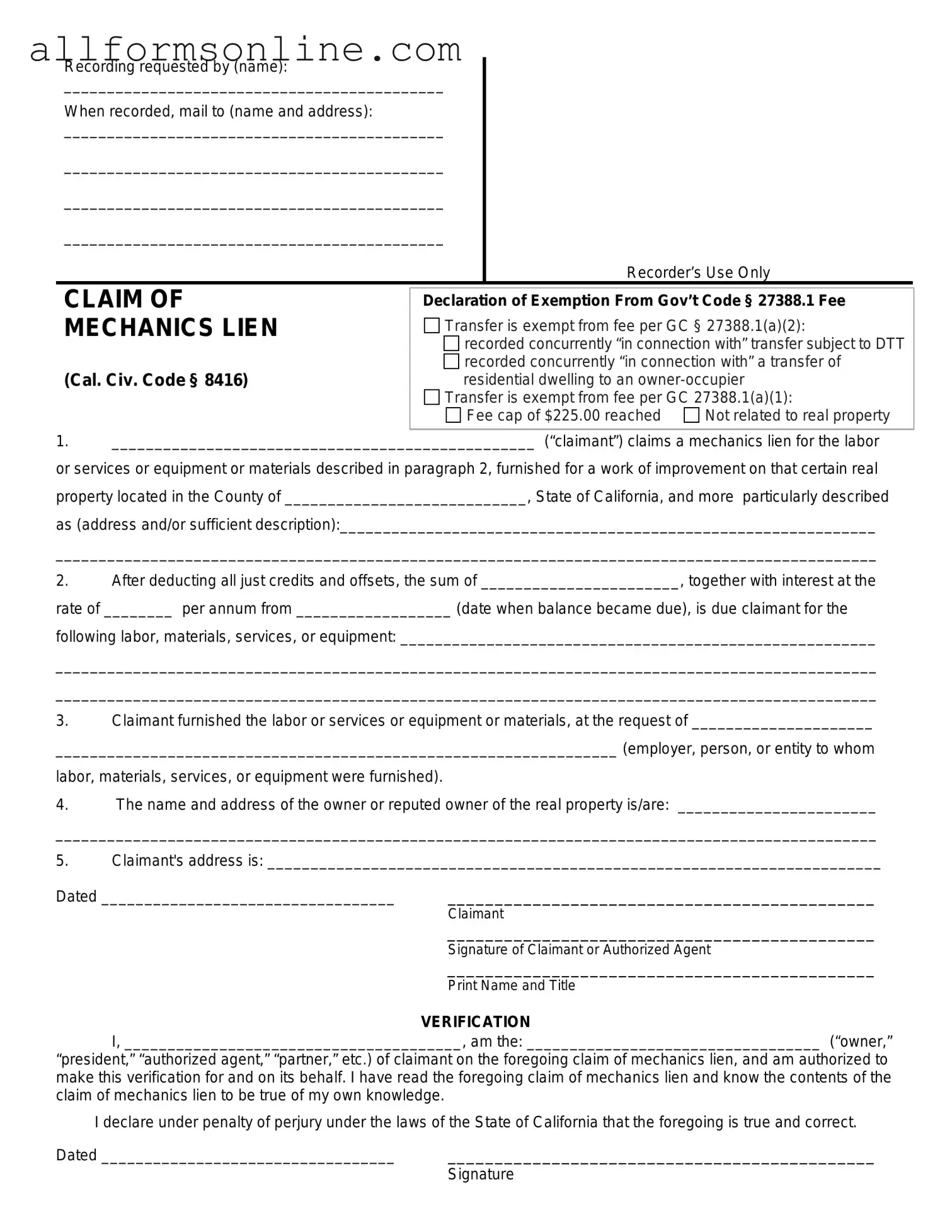What is a Mechanics Lien in California?
A Mechanics Lien is a legal claim against a property that ensures payment for labor, materials, or services provided for the improvement of that property. It is a way for contractors, subcontractors, and suppliers to secure their right to be paid for their work. If payment is not made, the lien can lead to a forced sale of the property to satisfy the debt.
Who can file a Mechanics Lien in California?
In California, various parties can file a Mechanics Lien. This includes general contractors, subcontractors, suppliers, and laborers who have contributed to the improvement of a property. However, certain requirements must be met, such as having a contractual relationship with the property owner or being in direct contact with the work being done.
What information is required to complete the Mechanics Lien form?
The Mechanics Lien form requires specific information, including the property owner’s name, the property address, a description of the work performed, and the amount owed. It is crucial to provide accurate details to ensure the lien is valid and enforceable.
How long do I have to file a Mechanics Lien in California?
In California, you generally have 90 days from the completion of the work or the last delivery of materials to file a Mechanics Lien. It is important to adhere to this timeline to protect your rights. If you miss this deadline, you may lose your ability to collect payment through a lien.
What happens after I file a Mechanics Lien?
Once a Mechanics Lien is filed, it becomes a public record. The property owner will be notified, and they may choose to pay the outstanding amount to have the lien removed. If the debt remains unpaid, the lienholder may initiate legal action to enforce the lien, potentially leading to a sale of the property.
Can a Mechanics Lien be removed?
Yes, a Mechanics Lien can be removed. This typically occurs when the debt is paid in full, or if the lienholder voluntarily releases the lien. Additionally, if the lien is found to be invalid, it can be challenged and removed through legal proceedings.
What are the consequences of not paying a Mechanics Lien?
If a Mechanics Lien is not paid, the lienholder may take legal action to enforce the lien. This can result in a court judgment and potentially lead to the sale of the property to satisfy the debt. It is essential for property owners to address any liens promptly to avoid further legal complications.
